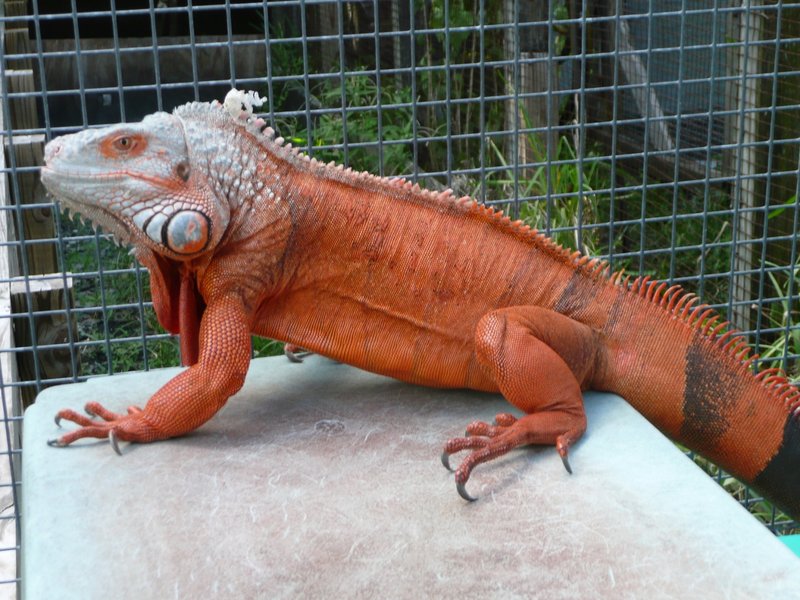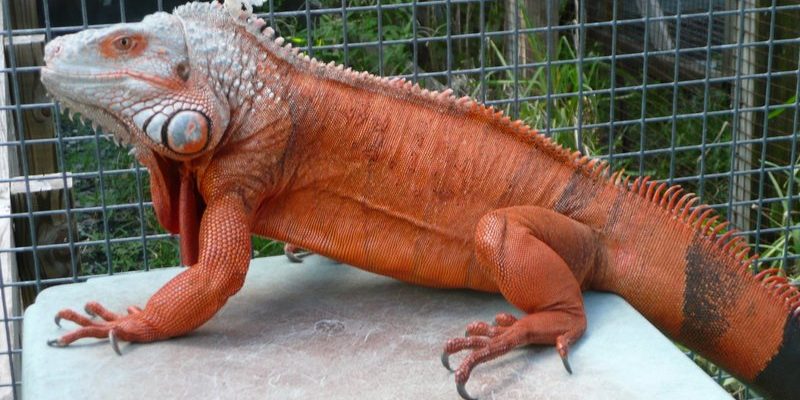
Red iguanas, while stunning, are not your typical house pet. Their needs can be a bit complex, and understanding whether they thrive better indoors or outdoors is crucial to their well-being. Just like deciding where to set up a cozy reading nook, figuring out the right environment for your iguana involves careful thought. Let’s explore the ins and outs of keeping these remarkable reptiles in either setting.
The Natural Habitat of Red Iguanas
Before we jump into the pros and cons of indoor and outdoor living for red iguanas, it’s essential to understand where they come from. Red iguanas are native to parts of Central and South America, where they roam tropical forests and bask in the sun. Their natural habitat provides plenty of warmth, humidity, and a variety of plants to munch on.
In these environments, they spend their time climbing in trees and lounging on branches. This means they need a space that mimics their natural setting to feel comfortable and healthy. When we bring them into our homes or yards, the goal is to replicate those conditions as closely as possible. That’s where understanding whether to keep them indoors or outdoors becomes critical.
Indoor Living: Pros and Cons
Let’s start with the idea of keeping your red iguana indoors. Many reptile enthusiasts prefer this option because it allows for more control over their environment. Here are some advantages of indoor living:
- Temperature Control: You can easily adjust the temperature and humidity levels with heat lamps and misting systems. This is vital for your iguana’s health, as they thrive in specific ranges.
- Safety: Keeping them indoors protects them from predators, extreme weather, and diseases that could be present in an outdoor setting.
- Interaction: An indoor iguana is typically more accessible for handling and bonding, allowing you to develop a close relationship with your pet.
However, there are also some downsides to consider.
- Space Limitations: Indoor setups can become cramped, especially as your iguana grows. You’ll need to invest in a proper enclosure that allows for climbing and exploration.
- Artificial Lighting: You’ll need to provide UVB lighting for your iguana to ensure they get the necessary vitamin D3. This requires regular maintenance and monitoring.
Outdoor Living: Pros and Cons
Now, let’s talk about the idea of giving your red iguana an outdoor life. The thought of letting them roam in a garden sounds idyllic, doesn’t it? Here’s why some people choose to keep their iguanas outside:
- Natural Sunlight: Outdoor living provides your iguana with plenty of natural sunlight, which is essential for their health and well-being.
- Space to Roam: A yard can offer a larger area for your iguana to explore than a typical indoor enclosure, helping to keep them physically active.
- Natural Behaviors: Outdoor settings allow iguanas to express their natural instincts, like climbing and basking, promoting better overall mental health.
On the flip side, outdoor living comes with its own challenges:
- Predator Risk: Outdoor iguanas are more susceptible to predators like cats, birds of prey, or even other wildlife, potentially putting them in harm’s way.
- Environmental Factors: Extreme heat, cold, or unpredictable weather can be harmful, and you’ll need to ensure a safe retreat for your iguana during these times.
- Pest Issues: Outdoor living can expose your iguana to parasites and pests that they might not encounter indoors.
Creating the Ideal Indoor Environment
If you decide to keep your red iguana indoors, it’s vital to set up their space just right. An ideal enclosure should be spacious and mimic their natural habitat as much as possible. Here are some essentials:
1. Size Matters: Aim for a large terrarium (at least 6 feet long) that gives them plenty of room to climb and explore.
2. Basking Spots: Make sure to provide areas with heat lamps where they can bask in the warmth and feel secure.
3. Humidity Control: Use a misting system or humidity gauge to keep humidity levels between 60-70%, which is crucial for their skin and overall health.
4. Decor and Climbing Opportunities: Incorporate branches, leaves, and rocks to help satisfy their climbing instincts.
Outdoor Setup Essentials for Red Iguanas
Thinking of giving your iguana the freedom of the great outdoors? You’ll need to be just as careful with their environment out there. Here are some tips for creating a safe, suitable outdoor habitat:
1. Secure Enclosure: Create a spacious, secure pen or enclosure that protects them from predators while allowing them to bask in the sun.
2. Shade and Shelter: Provide shaded areas where they can escape the heat, along with a sheltered spot to retreat during bad weather.
3. Pest Control: Keep an eye on potential pests. Regular checks can help you catch any unwanted critters early.
4. Access to Water and Food: Make sure they have fresh water and a variety of leafy greens readily available.
Final Thoughts: Choosing What’s Best for Your Red Iguana
Deciding whether to keep your red iguana indoors or outdoors isn’t a straightforward choice—it depends on your living situation and how much effort you want to put into their care. Both environments can work, but they need to be tailored to meet your iguana’s specific requirements.
In the end, the choice should come down to what you can consistently provide—whether it’s controlled conditions indoors or a spacious outdoor habitat. Whatever path you choose, ensure it prioritizes your furry friend’s health and happiness. Let your red iguana thrive, and you’ll both enjoy a wonderful companionship.

